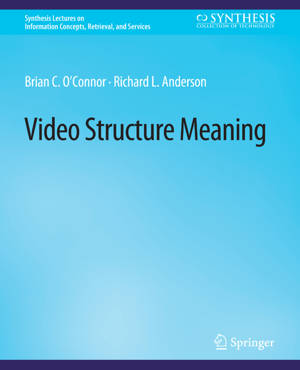
- Afhalen na 1 uur in een winkel met voorraad
- Gratis thuislevering in België vanaf € 30
- Ruim aanbod met 7 miljoen producten
- Afhalen na 1 uur in een winkel met voorraad
- Gratis thuislevering in België vanaf € 30
- Ruim aanbod met 7 miljoen producten
Zoeken
Omschrijving
For over a century, motion pictures have entertained us, occasionally educated us, and even served a few specialized fields of study. Now, however, with the precipitous drop in prices and increase in image quality, motion pictures are as widespread as paperback books and postcards once were. Yet, theories and practices of analysis for particular genres and analytical stances, definitions, concepts, and tools that span platforms have been wanting. Therefore, we developed a suite of tools to enable close structural analysis of the time-varying signal set of a movie. We take an information-theoretic approach (message is a signal set) generated (coded) under various antecedents (sent over some channel) decoded under some other set of antecedents. Cultural, technical, and personal antecedents might favor certain message-making systems over others. The same holds true at the recipient end-yet, the signal set remains the signal set. In order to discover how movies work-their structure and meaning-we honed ways to provide pixel level analysis, forms of clustering, and precise descriptions of what parts of a signal influence viewer behavior. We assert that analysis of the signal set across the evolution of film--from Edison to Hollywood to Brakhage to cats on social media--yields a common ontology with instantiations (responses to changes in coding and decoding antecedents).
Specificaties
Betrokkenen
- Auteur(s):
- Uitgeverij:
Inhoud
- Aantal bladzijden:
- 79
- Taal:
- Engels
- Reeks:
Eigenschappen
- Productcode (EAN):
- 9783031011924
- Verschijningsdatum:
- 2/10/2019
- Uitvoering:
- Paperback
- Formaat:
- Trade paperback (VS)
- Afmetingen:
- 191 mm x 235 mm
- Gewicht:
- 206 g

Alleen bij Standaard Boekhandel
+ 69 punten op je klantenkaart van Standaard Boekhandel
Beoordelingen
We publiceren alleen reviews die voldoen aan de voorwaarden voor reviews. Bekijk onze voorwaarden voor reviews.











